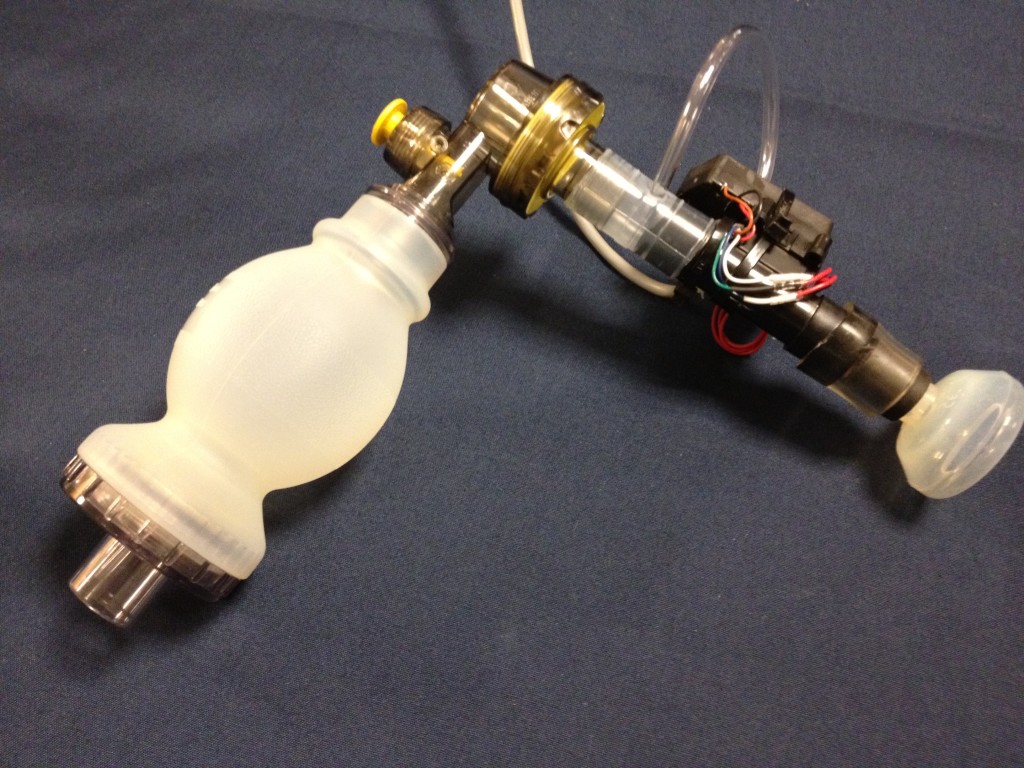This idea for the Augmented Infant Resuscitator (AIR) device originated with Dr. Data Santorino, a national trainer for Helping Babies Breathe (HBB) in Uganda. Data has trained more than 1000 healthcare providers in the HBB program.
CAMTech hosted the MIT H@cking Medicine Hackathon at Massachusetts General Hospital in October 2012, Data requested a way to quantitatively test the skills of resuscitation trainees. Among other things, he wanted to measure whether practitioners who successfully complete training retain their skills, or at what rate they decay.
In less than 48 hours, a team of two engineers, and one other doctor joined Data. They built an crude (but functional!) working prototype device to address Data’s challenge:

The original proof of concept prototype installed in the air path of a Laerdal bag valve mask (BVM).
The prototype inserted sensors from the trash of the Sloan Automotive Laboratory at MIT, into the airway path. A custom algorithm uses the sensor readings to detect the most common ventilation problems:
- Airway blockage/obstruction
- Air leak at the mask-face interface
- Incorrect ventilation rate
- Excessive ventilation pressure
This prototype sent feedback to a laptop to alert users to problems, giving them actionable cues for how to correct ventilation problems:
